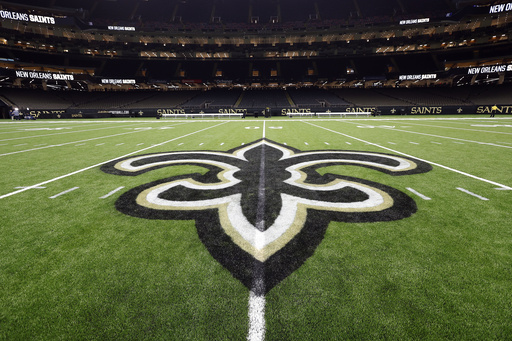NEW ORLEANS — As church leaders in New Orleans prepared for the repercussions of releasing a list of abusive Catholic priests, they found unexpected support from the city’s NFL team, the New Orleans Saints. Over several months, a specialized crisis communication strategy, led by the team’s president and other higher-ups, was executed to help navigate the aftermath of the clergy sexual abuse scandal. Internal emails shared insights into the Saints’ closer involvement with the church’s public relations than was previously disclosed, revealing an effort directed by the team’s Catholic owner, who has maintained strong ties to the local archbishop.
These emails disclosed how various entities in New Orleans, including a sitting federal judge and local media, united to support church authorities during this pivotal period. Crucial moments outlined in these communications included significant interactions between Saints executives and church leaders ahead of the public release of the priests’ names. For instance, a team spokesperson briefed the president about discussions with the city’s top prosecutor shortly before the church unveiled the list. This conversation was significant enough that it influenced the selection of names on the list, highlighting the coordination between the Saints and church officials.
Saints’ executives were among the first external parties to review the list, which comprised a limited number of accused individuals. This launch was immediately provocative, enticing civil lawsuits and scrutiny from law enforcement at both federal and state levels. Additionally, the Saints’ president drafted preparatory questions for Archbishop Gregory Aymond to anticipate during interviews, and updates from the Saints’ communications vice president highlighted the moving dynamics of support between the archbishop and team officials, emphasizing a collective message to the public.
The findings from the emails contradict previous statements made by the Saints about their involvement, where they claimed to offer minimal assistance and fought in court to keep these communications under wraps. The sentiment among community members, particularly victims of clergy abuse, was one of disbelief and disappointment at the apparent effort to shield alleged wrongdoers. State Representative Mandie Landry expressed concern over the lengths to which the Saints went in protecting those accused of child abuse, emphasizing the moral failings of such actions.
The Saints later conveyed that their engagement with the archdiocese is in the past and pertains to a time before they became entangled in legal challenges associated with a priest accused of molestation. The organization insisted that they do not support the concealment of church abuse, acknowledging that it is a grave reality. However, the statements did little to mitigate the outrage from clergy abuse survivors, who expressed feelings of betrayal.
After an initial report uncovered the Saints’ partnership with the church in early 2020, team ownership publicly dismissed allegations of involvement in shaping the priests’ list. They denied claims that any employees had input regarding the inclusion or exclusion of names, and past district attorney Leon Cannizzaro aligned with this stance, asserting he had no role in amending the list despite contradictory information discussed within the Saints’ communication.
These email exchanges not only raise concerns about the Saints’ conduct but also how this interconnected web may contravene the NFL’s standards against actions deemed harmful to the league’s integrity. As the Saints’ executive roles expanded within the context of this scandal, the message could draw scrutiny from NFL officials, including Commissioner Roger Goodell.
The situation highlights the collaborative atmosphere among several New Orleans institutions, with a federal judge expressing appreciation for Saints’ efforts in support of the local archdiocese. The judge’s commendations seemed to bolster the claims made by Archbishop Aymond about taking leadership in the face of a public relations crisis. The list that was ultimately released marked a turning point for the archdiocese as it conveyed a public acknowledgment of past abuses along with a commitment to accountability. This act, however, coincided with an ongoing bankruptcy process for the archdiocese amid widespread allegations and lawsuits by over 600 individuals claiming abuse.
The nature of the list revealed an alarming absence of numerous accused clergy, per prior investigative reports. In-depth investigations led by both local and federal authorities have since exposed significant issues tied to the shielding of abusive clergy within the church. Since the Saints’ intervention began, several clergy members have faced grave legal repercussions.
During the church’s media preparations, the Saints coordinated a deliberate public relations strategy to mitigate potential fallout, tapping into local media relationships and crafting narrative talking points. The Saints’ spokesperson even solicited support by urging local newspapers to refrain from negative portrayals of the archdiocese and expressed the importance of developing favorable community narratives around the Archbishop’s pivotal role.
The long-standing relationship between the Saints and local church leaders has fostered a unique camaraderie, with the archbishop having been instrumental in personal and charitable endeavors linked to the team’s ownership. However, the response to clergy abuse and the ensuing crisis has left many questioning the motives and integrity of those willing to support an organization amidst such serious accusations, reflecting a deep community concern over justice and accountability.
As the investigation continues, the public and the press will likely focus on the communications and partnerships established during this sensitive time, scrutinizing the intersection of sports, faith, and ethics in a place where legacy and accountability hang in the balance.
